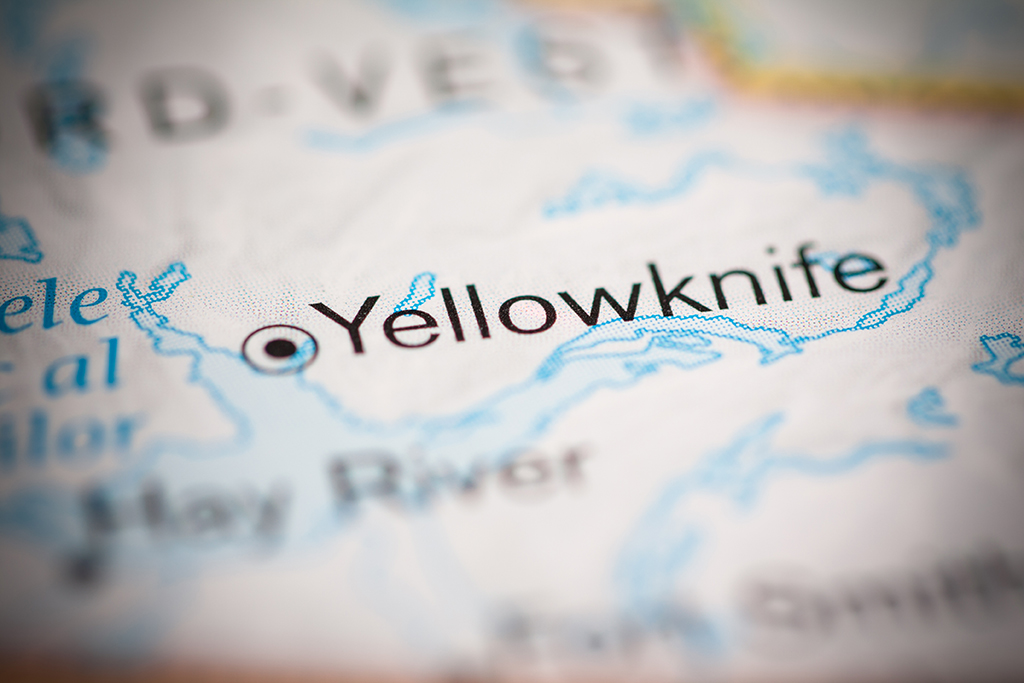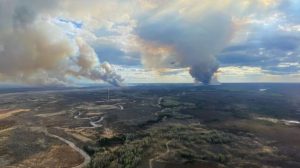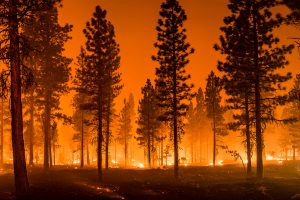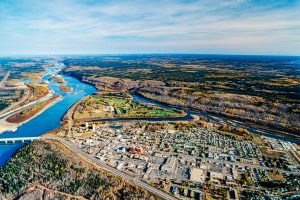YELLOWKNIFE, NWT – Thousands of Yellowknife residents joined road convoys and stood with packed bags in snaking lines at the airport Thursday to flee a looming wildfire approaching the capital of the Northwest Territories.
The 20,000 residents of the city and two nearby First Nations have been ordered to be out by noon Friday while crews battle some of the more than 200 blazes that have forced thousands more to retreat to evacuation centres throughout Alberta as far south as Calgary.
“God, just so many emotions I don’t even know where to begin,” said lifelong Yellowknifer Angela Canning as she prepared to pack up her two dogs and some belongings and head out in the camper while her husband, an essential worker, stayed behind.
“I’m in shock.”
N.W.T. officials said the evacuation has so far been safe, with the fire about 16 kilometres from Yellowknife’s northern outskirts. The order was made, in part, to allow for an orderly exit while the fire is at a distance.
Events moved quickly on multiple fronts Thursday from large logistical operations to personal worries for loved ones left behind.
At Yellowknife’s Sir John Franklin high school, there was a kilometre-long lineup of residents who don’t have vehicles queuing up for flights out. Some, including Edward Fraser, were from the city’s homeless shelters.
“They closed the doors and locked up all our stuff we can’t take with us. All of us just have backpacks,” said Fraser.
Vincent Meslage spent the day driving people to the high school so they could catch their flights.
He said most grocery stores and restaurants were now closed, and said he expects by Friday the territorial capital will feel like a ghost town.
At The Trading Post restaurant, Richard McIntosh said he’s staying behind to keep serving meals to other essential workers.
“It’s soups and sandwiches right now,” he said. With the help of a chef from another restaurant, more than 100 meals went out the door Thursday, not to mention chow for the dog teams McIntosh runs for winter tourists.
“My family’s all left town so I’m able to care for the dogs,” he said.
At Kam Lake, near Yellowknife, Grant Beck said he has enough food for himself and his 170 canine employees, with trailers on hand if they need to move quickly.
“We know how to move dogs around. If I had to, I’d just move them down to the lake and ferry them out to an island. It’s not like we have to load them up and move them down to Edmonton,” said Beck.
At Fort Providence, south of Yellowknife, Linda Croft of the Big River Service Station said the lineup of vehicles was overwhelming.
“You can’t see the end of it.”
In Vancouver, Nina and Justin Drebot and their young son arrived from Yellowknife Thursday on a preplanned flight for a family member’s wedding, with worries now about where they go from here and when they can return.
“We’re pretty grateful that we had this flight booked,” the wife said. She said they’ll probably head to Calgary should the evacuation order remain.
Preet Dhillon said she booked a last-minute flight out of Yellowknife for more than $2,000 but said she’s grateful to have left when she could.
Throughout Yellowknife, officials moved to lock the city down.
Canadian Armed Forces members are conducting aerial reconnaissance and building firebreaks and Canadian Rangers are helping process and evacuees to get them on planes.
The Alberta government confirmed it is taking in inmates from N.W.T. correctional facilities.
The N.W.T. health authority said surgeries will be cut and some services at Yellowknife’s Stanton Territorial Hospital, including long-term care, closed by Friday. Intensive care patients were being moved to Alberta.
N.W.T. fire information officer Mike Westwick said highway convoys were being organized by government emergency workers amid concerns strong north winds could push flames toward Highway 3, the main highway out.
Evacuees travelling by air to Alberta were being directed to Calgary and officials were trying to reserve seats for those with health problems.
In Calgary, officials said reception centres have been set up to accommodate at least 5,000 people. Another was to open Friday at the Edmonton EXPO Centre.
Other Alberta evacuation centres were operating in Fox Creek, Valleyview and Grande Prairie in the north, along with St. Albert, Leduc and Red Deer in the central region.
At Fox Creek and Valleyview, exhausted evacuees began trickling in within hours of it opening.
The centre in Valleyview had baby formula, diapers and other necessities at the ready, while staff with Alberta Health Services were on hand to provide health information.
Prime Minister Justin Trudeau, vacationing in Tofino, B.C., convened an urgent meeting with ministers and senior officials Thursday.
A summary of the meeting provided by his office said Trudeau was given an update on the federal support being deployed in the N.W.T., including military and RCMP personnel, as well as aircraft, logistics, planning and co-ordination.
The impact on infrastructure and telecommunications was also discussed and Trudeau stressed that price gouging, including for airfare and essential goods, would not be tolerated, his office said.
The N.W.T. said 236 blazes were burning Thursday, including fires threatening Yellowknife and the town of Hay River.
Other communities from Yellowknife south to the Alberta boundary ordered residents out earlier this week.
The blazes have burned an area almost four times the size of Prince Edward Island. No deaths have been reported.
©2023 THE CANADIAN PRESS









Recent Comments
comments for this post are closed